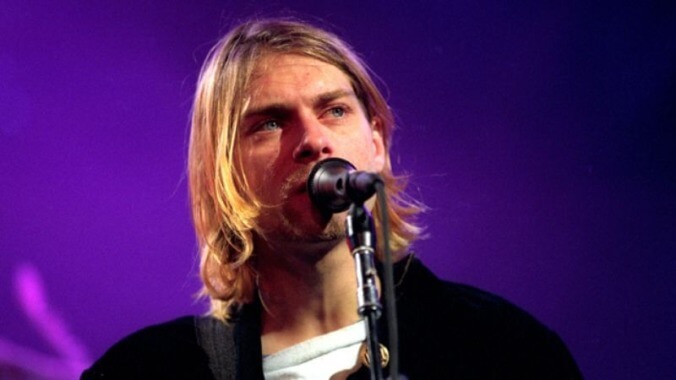Seattle: Kurt Cobain Park
Are you a bad person for wanting to see where Kurt Cobain died? And not just died, but violently took his own life after a long, sad battle with depression and drug addiction?
Short answer: No. Longer answer: No, as long as you don’t trespass or misbehave. The house at 171 Lake Washington Blvd. East—more specifically, the benches in park next to it—is all Nirvana fans have. Cobain has no grave and, until April of this year, no memorial. (His hometown of Aberdeen, Washington, erected a statue in his honor by the famous Young Street Bridge.) After Cobain’s suicide in early April of 1994, fans flocked to Viretta Park, and 17 years later, they still do by the thousands every year. Even Google Maps calls it “Kurt Cobain Park.”
During the couple of hours The A.V. Club hung out at the park—in the middle of a Monday afternoon—about a dozen people, speaking three different languages and coming from at least four countries, stopped there. They come to crane their necks at the heavily obscured residence and leave a message and/or gift for Cobain on the park’s two benches, primarily the one closer to his house, where he would occasionally sit. They’re overwhelmingly heartfelt messages about his music changing their lives, along with some expected nonsense, like, say, a giant “420.”
These aren’t the original boards that were on the bench when Cobain died. No one’s sure how many times they’ve changed or what happens to them after—there was some discussion of saving them—but they’ve become a sort of rotating, fan-made memorial, which seems like something Cobain would appreciate. The neighbors? Not so much.
“They absolutely detest it and they hate it,” says Pop Pilgrims guest Charles Cross, author of the essential Cobain biography Heavier Than Heaven. “This is a snotty neighborhood. As you look around, you will see signs, and some of the signs that say ‘No Trespassing’ are in French. So that gives you a sense. Howard Schultz, who is the CEO of Starbucks, used to actually live in the house right over here. Peter Buck of R.E.M. used to live in the house behind here. You’re talking about industry scions, Microsoft billionaires, all in this neighborhood. So the idea of a bunch of scruffy kids from Argentina showing up to drink beer on this bench at all hours of the night, the neighbors hate.”
Courtney Love sold the house in 1997 to its current owners, who were supposedly surprised by the attention the house receives. They have since taken measures to make the building more private, like adding a new rear fence and successfully petitioning the city to remove a tree in the park people used to climb and peer into the property. Love razed the greenhouse where Cobain shot himself and planted some of his ashes under a tree out front. The story goes that she stipulated in the sales contract that she can come take the tree at any time.
Fans will have to make do with the park next door, as the city’s in no hurry to memorialize Cobain—but not really because of how he died.
“To some degree, the fact that he did drugs is something that the city of Seattle has had a bigger problem with,” Cross says. “I am also a biographer of Hendrix, and even though Hendrix died in 1970, it wasn’t until the last year that the city of Seattle has done anything officially to honor Jimi Hendrix. They have now named a park, the Jimi Hendrix Park.
“There has been some talk of naming this park the Kurt Cobain Park. Probably the people living in his house now would fight that, and maybe because they are the neighbors, they could put the kibosh on that, but maybe there should be some kind official acknowledgement of what he meant to the city. Whether he did drugs or not does not affect in my opinion what he created with his art.”
